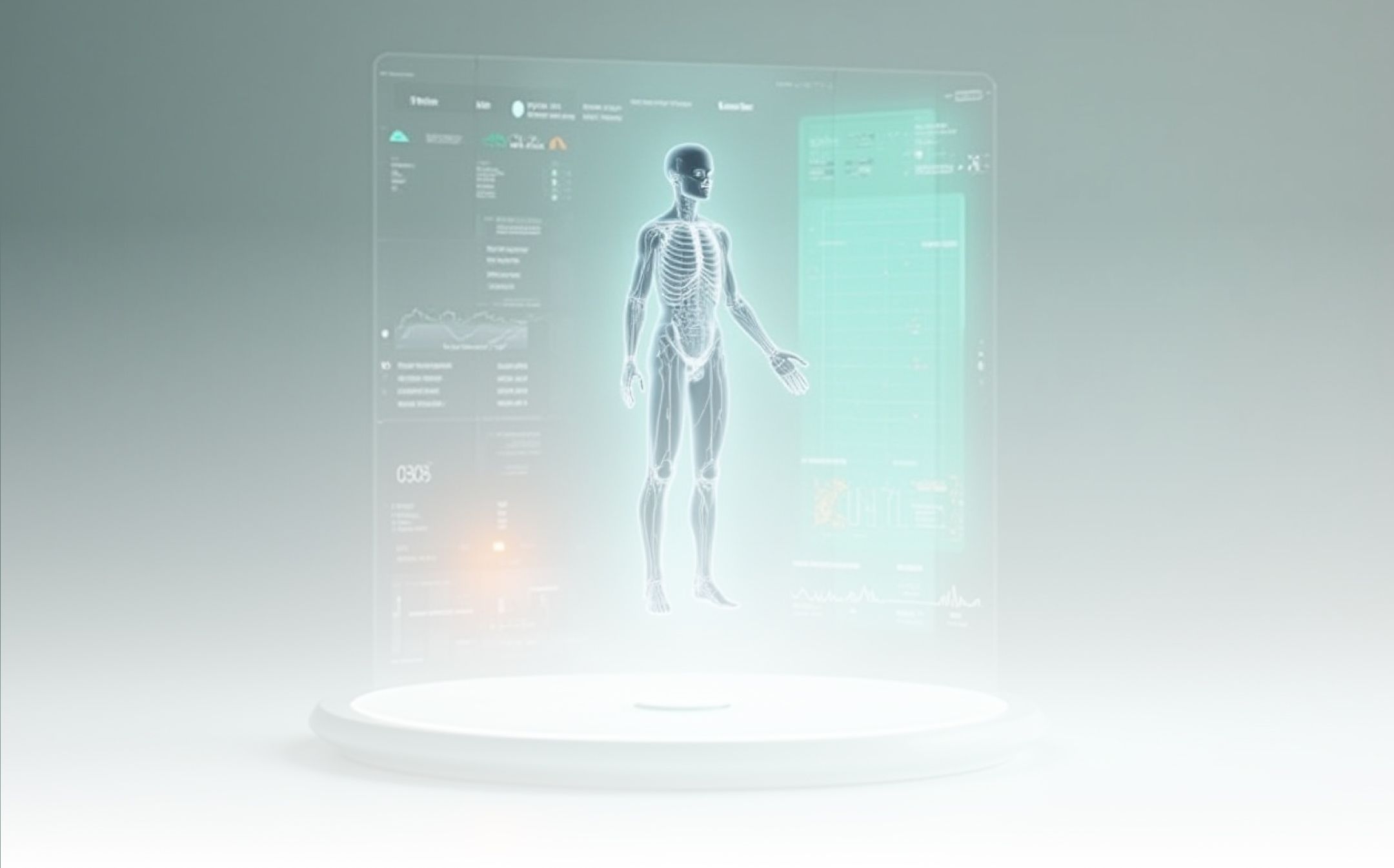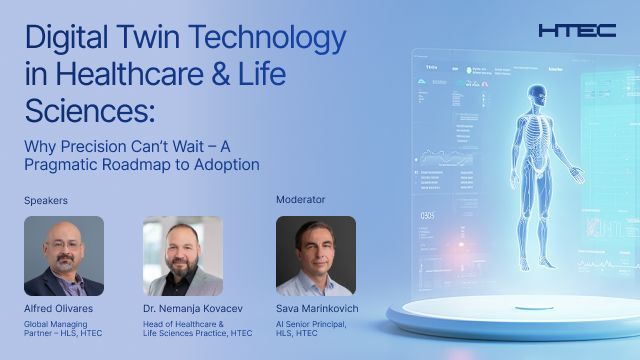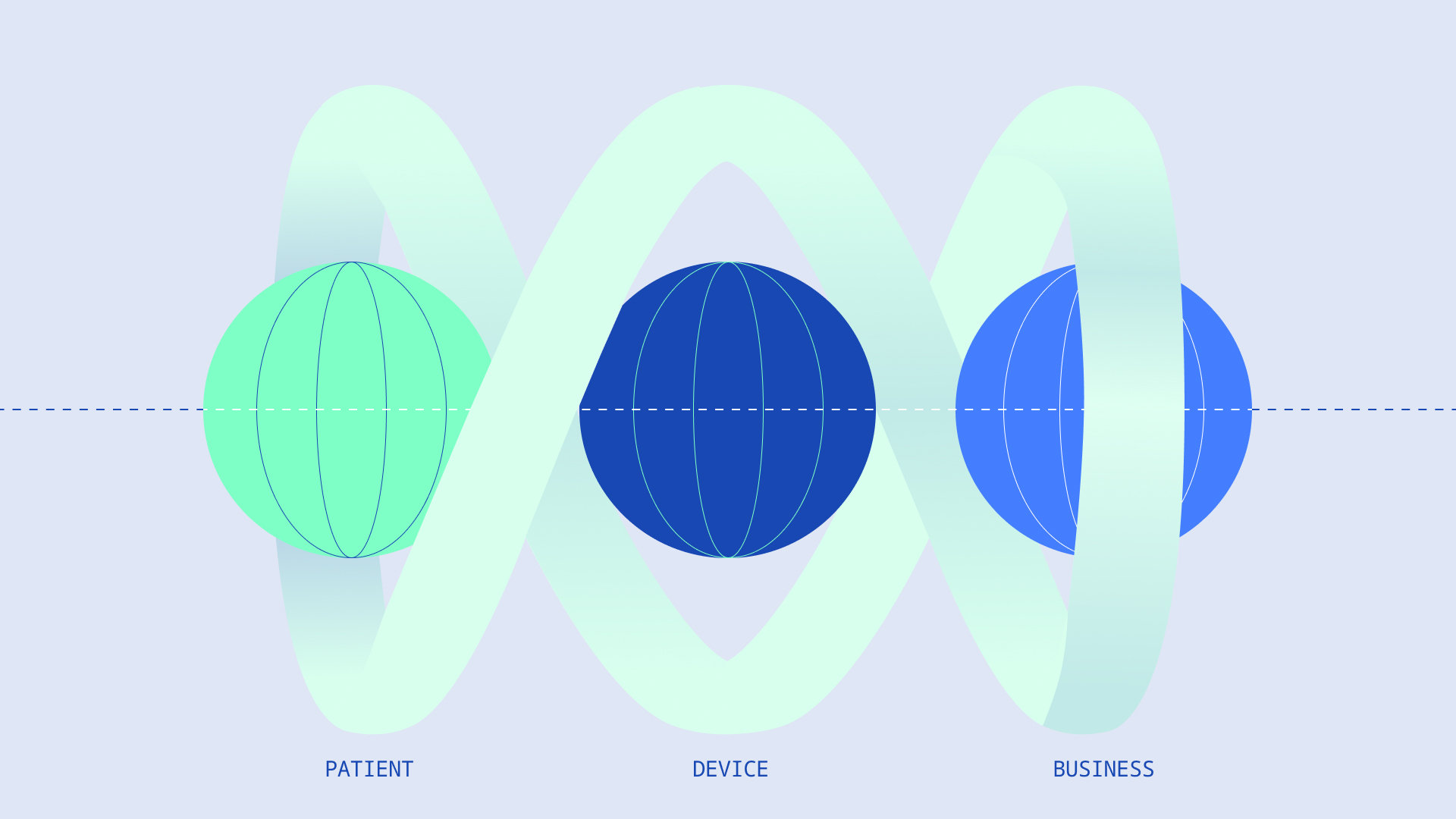
The precision advantage. Engineered with digital twins.
Digital twins are how the most advanced MedTech companies design smarter, scale faster, and deliver precision – from concept to care.

Nemanja Kovačev
Head of Healthcare &
Life Sciences Practice
Digital twins are reshaping MedTech – from design to deployment

Across every boardroom and industry forum, MedTech leaders are grappling with a shared challenge: how to accelerate innovation under growing operational and regulatory constraints.
Teams are under pressure to shorten development cycles, demonstrate real-world clinical performance, and deliver personalized care – without driving up cost or complexity. Yet many organizations remain hindered by siloed data, stretched R&D timelines, and a lack of synchronization between regulatory, clinical, and manufacturing functions.
Why MedTech needs Digital Twins
Digital twins are virtual replicas of physical devices, systems, or even patients – built using real-time data, AI, and simulation. In MedTech, they’re transforming how companies design, test, manufacture, and personalize care.
With rising R&D costs, regulatory complexity, and a push for precision medicine, digital twins help medtech leaders move faster, reduce risk, and stay ahead of evolving FDA and CMS expectations.
The Precision Advantage
The most advanced MedTech companies aren’t just innovating; they’re orchestrating precision at every stage.
- Precision is a system: It’s built into workflows, not bolted on later.
- Simulation is the new standard: Test virtually before you build physically.
- From iteration to orchestration: Connect R&D, operations, and care into one intelligent loop.
Digital Twins
in action
Digital twins are reshaping how MedTech companies operate, from how devices are designed to how patients receive care. Teams are simulating device performance before building; predicting quality issues before they happen; and tailoring treatment pathways before patients ever walk through the door. It’s not just efficiency, it’s precision, engineered at every step.
Frequently asked questions
Curious how digital twins are transforming healthcare? Below are some of the most common questions about their role in accelerating innovation, improving patient outcomes, and optimizing manufacturing.
How are digital twins used in MedTech today?
Digital twins are used across the MedTech lifecycle from simulating device performance in R&D to optimizing factory throughput and personalizing patient care. They enable faster development, smarter manufacturing, and safer outcomes through continuous, real-time modeling.
What are the benefits of digital twins in healthcare and patient care?
Digital twins help personalize treatments, reduce complications, and support better decision-making. For healthcare teams, they enable predictive insights and improved efficiency. For patients, they mean safer, more tailored care experiences.
How do digital twins improve medical device development and testing?
By simulating device behavior in silico, digital twins reduce reliance on physical prototypes and animal testing. This speeds up development, lowers costs, and strengthens regulatory submissions with data-driven validation.
How do digital twins support regulatory submissions and audit readiness?
By simulating device behavior and documenting performance with digital evidence, digital twins provide a clear, traceable record for regulatory bodies. This helps streamline approvals, reduce rework, and ensure inspection readiness throughout the lifecycle.
What’s the ROI of implementing digital twins in a MedTech organization?
Digital twins can reduce R&D costs by up to 50%, lower manufacturing downtime by 20 – 40% and accelerate time-to-market. They also help prevent costly recalls, improve patient outcomes, and strengthen competitive advantage with data-driven precision.
Can digital twins improve manufacturing efficiency and compliance in MedTech?
Yes. Digital twins mirror production lines in real time, helping manufacturers predict downtime, optimize throughput, and simulate process changes without disrupting operations. They also support audit readiness by ensuring quality and compliance are built into every step.
What is the difference between a traditional medical simulation and a digital twin?
Traditional simulations are static and limited. Digital twins are dynamic, data-fed models that evolve in real-time, offering continuous insights, predictive capabilities, and deeper integration across systems and patient journeys.
Where can
we help?
Complete the form and an HTEC expert will contact you shortly.
Looking to join our team?
Visit our Careers & Culture page






